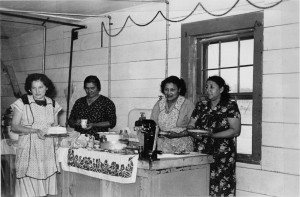
Montana’s 4-H clubs grew from three thousand youngsters in 1914 to over twenty thousand members a century later. The organization encourages children to develop skills that enable them to better their lives and strengthen their communities. Its emphasis on the economic importance of women’s work created leadership opportunities for women and inspired girls to partake in 4-H clubs, camps, and competitions. Women and girls in 4-H have proven their abilities while broadening the organization’s objectives and expanding its opportunities for boys and girls alike.
When Montana’s Cooperative Extension Service hired Augusta Evans to organize the state’s first 4-H clubs in 1914, the nation’s agricultural industry was striving to stabilize food production. The Extension Service and experimental agricultural stations engaged 4-H youth in their efforts to apply an industrial approach to farming: maximizing efficiency using new technologies and boosting production by applying scientific methods. Initially, almost all Montana’s 4-H members were boys, and these early clubs produced corn, peas, potatoes, beef, and sheep. In contrast, the state’s first girls’ clubs focused on corset making. By 1930, however, the number of girls in Montana’s clubs exceeded the number of boys, and their activities had greatly diversified.
Home Demonstration agents effected this change when they brought up-to-date techniques to rural women. Even women already experienced in canning and cooking benefited from the expertise of agents like Helen Mayfield, who demonstrated food preservation for maximum nutritional content. A 4-H leader from Rosebud County noted in the 1930s that farm women were often more bashful than their daughters but just as eager to try the newest technologies. This outreach to rural women stimulated a rapid rise of 4-H club leaders.
Continue reading Head, Heart, Hands, and Health: Montana’s Women and Girls in the 4-H Movement
